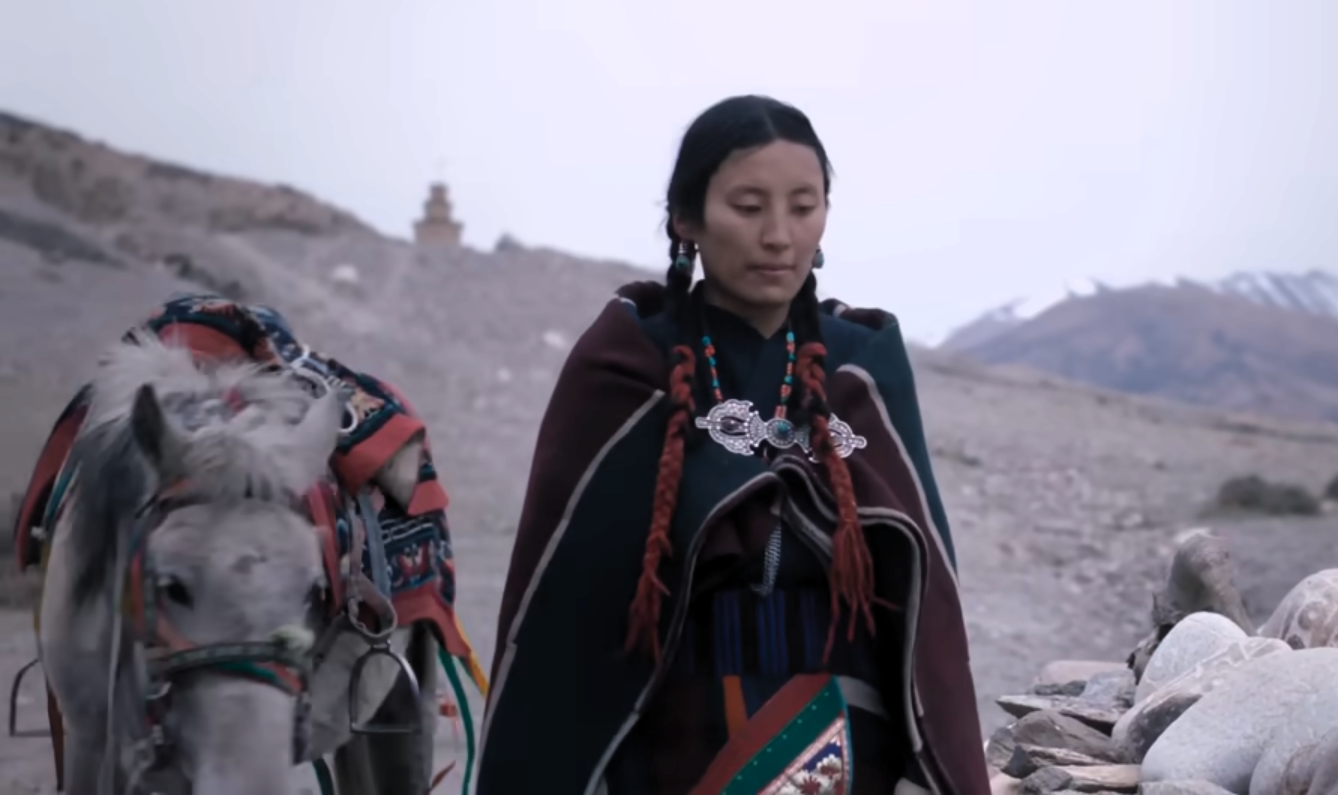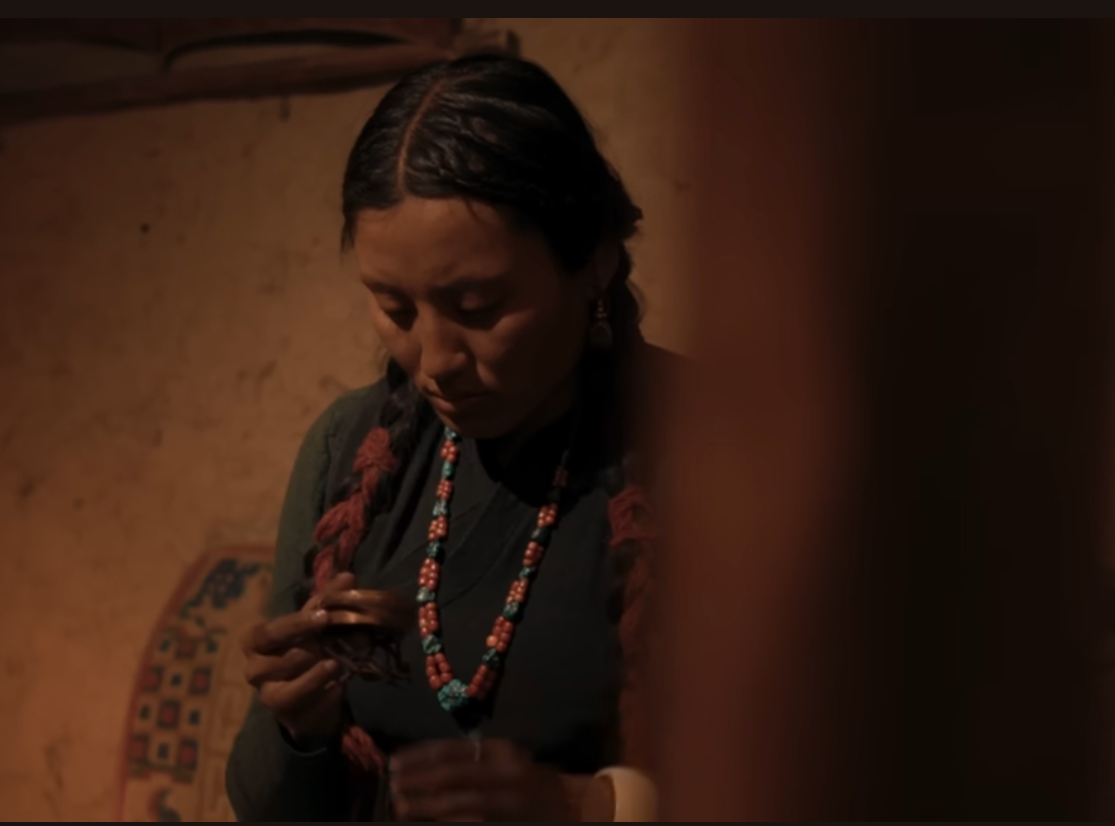
Spoiler Alert: This review contains major plot details and thematic discussions from Shambhala (2024). If you haven’t seen the film yet and wish to avoid spoilers, it’s recommended to watch it first.
Shambhala is a concept from Tibetan Buddhism. It represents a mythical kingdom of peace and enlightenment. People believe it to be a place where wisdom and compassion rule. It symbolises an ideal society, but more than that, it is about inner peace.
Shambhala is often seen as a metaphor. It’s not just a physical place but something inside everyone. It represents the journey towards enlightenment and finding inner balance. In this way, Shambhala teaches that real peace comes from within, through spiritual growth and self-awareness.
Min Bahadur Bham’s Shambhala (2024) is a visually and spiritually rich film that weaves together the personal, cultural, and spiritual journeys of its protagonist. The journey Pema embarks on is set against the vast backdrop of the Nepali Himalayas. The film touches on themes of patriarchy, traditional culture, and Buddhist spirituality. The themes of the film unfold as Pema embarks on a treacherous quest to find her missing husband, Tashi. What begins as a physical journey soon evolves into a deeper spiritual odyssey. Pema confronts not only the external challenges of nature but also the internal struggles posed by her societal roles and expectations.
Patriarchy and Culture

At the core of Shambhala is its critique of patriarchal norms within traditional Nepali culture. Pema is part of a polyandrous marriage, an ancient tradition where a woman marries multiple brothers. Despite this, the film quickly exposes the double standards imposed on her. The village’s rigid norms permit her to have multiple husbands, yet she is vilified at the first hint of infidelity. The film powerfully portrays how patriarchal structures confine women, limiting their freedom and subjecting them to harsh judgments. Pema’s struggle against these forces becomes symbolic of the struggles many women face in similar societies around the world.
The film also provides a close look at the nuances of rural Nepali life, including its customs and traditions. Shambhala meticulously captures local practices, such as a woman’s participation in an archery competition to prove her innocence against charges of adultery. This practice, steeped in superstition and tradition, speaks to how women are forced to navigate a patriarchal system that is stacked against them.
Additionally, Shambhala is filled with Buddhist philosophy. It teaches lessons about impermanence, suffering, compassion, and self-liberation. Pema’s journey shows how these ideas go beyond the physical world. They become a part of her and Karma, her monk brother-in-law.
Impermanence and inner transformation

The idea of impermanence is central to Buddhism and Shambhala. Pema’s journey is not just about finding Tashi. It’s about her transformation.
Life as she knew it no longer exists, and the film shows how she learns to let go of the past. She faces harsh conditions and societal pressures. But through these experiences, she starts to understand that everything in life changes. By embracing that, she begins to transform.
The film shows this lesson in a quiet but powerful way. As Pema walks through the empty landscapes, the silence around her reflects the inner calm she longs for.
The long, peaceful shots of the mountains highlight how temporary human life is compared to the unchanging natural world. By accepting life’s impermanence, Pema can transform herself.
Shambhala, in Buddhist teachings, represents a place of peace and ultimate enlightenment.
The movie shows that Pema’s journey to Shambhala is a journey within herself. She is not just looking for a lost husband. She is searching for inner peace and wisdom. The film uses the idea of Shambhala to represent the spiritual awakening Pema experiences as she moves away from societal expectations and toward self-realization.
Resilience in the face of suffering

Suffering is a key part of Buddhism, and Shambhala shows this with depth.
Pema’s life is filled with both emotional and physical pain. Tashi’s disappearance, the gossip, and the harsh journey through the mountains reflect the Buddhist truth that suffering is inevitable.
The film also shows how suffering can lead to growth. Pema’s strength in facing these struggles becomes her path to freedom. Her endurance, despite the pain and rejection, shows the Buddhist belief that suffering can bring personal growth.
By accepting her suffering with patience, Pema finds the strength to move forward.
Compassion and self-liberation

Compassion is a major theme in the film. It is not just for others but for oneself too. As Pema’s journey unfolds, she learns to develop compassion for herself.
Her quest is no longer just about proving her innocence to the community. It becomes about self-acceptance.
Buddhism teaches that self-compassion is key to finding inner peace. Shambhala shows this beautifully. By the end, Pema lets go of the need for external approval. She finds peace within herself. This is the film’s core message: true freedom comes from within. To overcome life’s challenges, we must learn to have compassion for ourselves.
The Ending: Metaphor or reality?

The film’s ending leaves many questions. Did Pema die, or was her death symbolic? In Buddhism, death is often seen as beyond the end of life. It represents a transformation. It’s the shedding of the ego, the part of us tied to worldly attachments. Shambhala plays with this idea.
Pema’s journey to find Tashi becomes more than just a search for her husband. It’s a journey of self-discovery. By the end, she has let go of her past. She has faced her fears and accepted life’s uncertainties. Whether she physically dies or not seems less important. The real focus is on her inner transformation.
Pema’s death, if it happens, is a metaphor for rebirth. She has reached a place of inner peace. She is no longer tied to the judgment of others or the pain of her past. In a way, the end suggests a new beginning. Pema is free. She has found Shambhala, not in the physical world, but within herself.
This ambiguity allows viewers to interpret the ending in different ways. Some may see it as a literal death. Others might view it as a spiritual awakening. Either way, the message remains the same. Pema’s journey is about more than finding her husband. It’s about finding herself and reaching a state of peace.
Conclusion

Shambhala is a deep reflection on the human experience. It blends Buddhist teachings with a personal story of survival and growth.
Pema’s journey through the Himalayas is not just physical. It’s a spiritual pilgrimage. The film explores themes like impermanence, suffering, and compassion. It shows how self-liberation can come from within. These ideas resonate beyond the film’s cultural setting.
They invite viewers to think about their own lives. Shambhala reminds us that true peace comes from within. It’s a journey we all must take, no matter where we start.
















